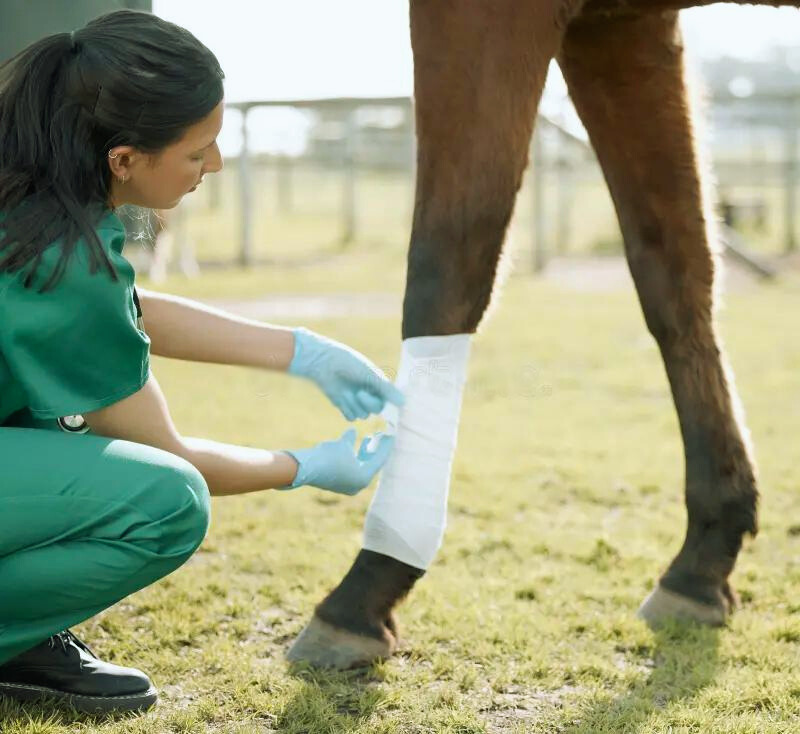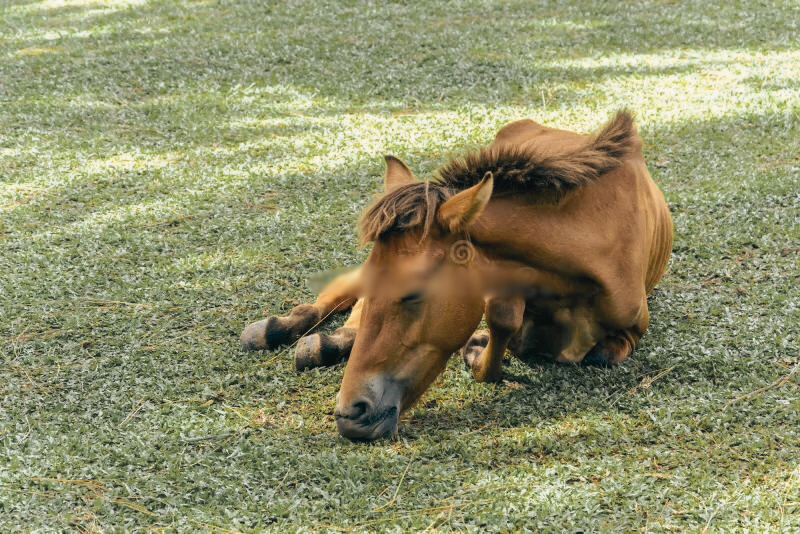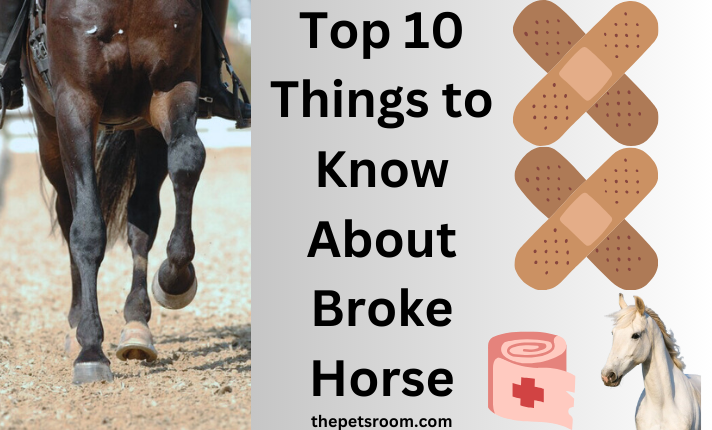Discover the meaning of broke horse the advantages of having a well-trained horse, and how regular training and correct maintenance can guarantee a dependable and secure riding partner. A horse that has been trained to be ridden and do many tasks is referred to be “broke”. The word implies that the horse can follow simple commands and has undergone a methodical training process to accept a saddle, bridle, and rider. A broken horse is typically regarded to be manageable and responsive to a rider’s orders, though the extent of training may differ.
Green Broke Horse
A green broke horse who has had some basic training and can obey basic orders while putting up with a rider’s presence is referred to as being “green broke.” These horses, however, are still regarded as novices, and because of their inexperience, they could behave erratically. To build dependability and consistency in their answers, they need more training and regular handling. Green broke horses may develop into trustworthy and well-trained partners for a variety of equestrian activities with time and further training.
Breaking a Horse
Training a horse to tolerate being ridden by a human is known as breaking it. This include teaching the horse to obey simple orders and acclimating it to a saddle, bridle, and the weight of the rider. From harsher, more aggressive tactics to more humane, gradual teaching strategies centered on fostering collaboration and trust, the process has developed.

Broke Horse Mean
The term “broke horse” comes from the idiom “breaking in” a horse, which denoted the act of taming a wild or untrained animal. Historically, this method was often harsh, necessitating the use of physical force to subdue the horse’s intrinsic instincts. The goal was to train the horse to be obedient and useful for transportation, farming, and riding. The techniques for breaking horses have changed dramatically throughout time.
In order to foster collaboration and trust between the trainer and the horse, modern horse training methods place a strong emphasis on kinder, more compassionate methods. These techniques put an emphasis on steady handling, progressive desensitization, and positive reinforcement to get the horse to accept a saddle, bridle, and rider voluntarily. Because of this, a broke horse nowadays is usually responsive, well-mannered, and well-adjusted, making it a trustworthy companion for a variety of equestrian activities.
Meaning of Breaking a Horse
A broken horse is trained to be ridden. This technique includes teaching the horse to accept equipment (saddle and bridle), carry a rider, and heed directions. To establish a cooperative relationship between the horse and the trainer, modern systems emphasize compassionate, positive reinforcement.
In the past, breaking a horse sometimes required using strong, brutal techniques to swiftly tame the animal’s impulses. But more gentle and progressive methods have become the norm in modern approaches. The welfare of the horse is now the first priority for trainers, who use consistency and patience to help the horse gradually adjust to new situations and orders. This change enhances the training process for the horse as a whole and produces better long-term results, making the horses happier and more self-assured in their duties as riding partners in addition to being well-trained.
Dead broke horse
A well-trained horse that is incredibly quiet, safe to ride in almost any circumstance, and dependable is known as a dead broke horse. Because they are used to a wide range of conditions and stimuli, these horses are perfect for riders of all experience levels, even young riders. Because of their dependability and peaceful disposition, dead broke horses are in great demand and are perfect for beginning riders, therapeutic riding programs, and family environments.

These horses are kept calm and unflappable by being exposed to a range of settings and circumstances, including trail riding, parades, and packed events. Due to their dependability, riders of all ages and skill levels may have a safe and pleasurable ride, knowing that they will manage unforeseen events without becoming frightened. Dead broke horses are thus often regarded as priceless assets in both amateur and professional equestrian contexts.
Fancy Broke Horse
In the equestrian world, a horse that is well-trained and receptive to its rider is referred to be “fancy broke.” The meaning is broken down as follows:
Fancy: This denotes a well trained horse, often with particular abilities. A “fancy” horse may have had instruction in show jumping, dressage, or reining. These horses often move with grace and refinement.
The horse is said to be “broke” if it is well-trained and used to being ridden. A horse that is “broke” can be readily handled, knows how to obey orders, and feels at ease in both the saddle and bridle.
Combining these, a “fancy broke horse” horse is one that is not only proficient in riding but also well trained and capable of carrying out certain duties with grace and accuracy. In competitive sports or for elite riding, this kind of horse is highly prized.
Qualities of an Elegant Broke Horse
- Responsive: The horse reacts to the rider’s commands with accuracy and speed.
- Well-Mannered: Behaves well and maintains composure.
- Beyond basic riding instruction, advanced training often consists of specialized disciplines.
- Elegant Movements: Has a polished look and moves with ease and elegance.
Break the Horse
Teaching a horse to accept a rider and obey orders is known as “breaking the horse.” There are usually multiple stages to the process:
- First Handling and Groundwork: Developing a climate of trust and respect, taking charge, keeping ties, and obeying simple ground orders.
- Introduction to Tack: Make sure the horse is comfortable and fits properly by gradually acclimating them to wearing a saddle and bridle.
- Equine Weight Adjustment: Acclimating the horse to the weight and presence of a rider, beginning with light riding and mounting drills.
- Basic Riding Commands: Using consistent cues and reinforcement, teach the horse to walk, halt, turn, and back up under saddle.

Benefits of Owning a Broke Horse
Dependability and Safety
Both the rider and the horse are safer when they own a broke horse. A well-behaved horse is less likely to become agitated or startle because it understands and obeys commands. This consistency is essential, particularly for novice riders or in risky circumstances. A broke horse is less likely to have an accident since it is accustomed to various stimuli and can deal with unforeseen circumstances calmly.
Taking Care of a Broke Horse:
Daily Upkeep and Care
A breaking horse needs proper daily care to stay healthy and happy.
Feeding: Give the horse a well-balanced meal according to its age, weight, and degree of exercise. Make sure you always have access to clean water.
Grooming: Grooming on a regular basis promotes coat health and offers a chance to look for problems or injuries.
Housing: Make sure the horse has a tidy, secure space with enough protection from the weather.

FAQS
What is a Green Broke Horse?
A green broke horse has had little instruction and is used to being led, saddled, and riding by a rider. Since they are still very young and may be erratic, these horses will need further training before they can be fully trusted.
What Does Broke Horse Mean?
The word “broke” has its origins in the old English expression “breaking in” a horse, which described the process of taming an untamed or wild animal. This approach, which often included employing physical force to tame the horse’s innate tendencies, was brutal. These days, it refers to a horse that has been taught for riding, with an emphasis on kind, constructive reinforcement.
What Does a Fancy Broke Horse Mean?
A fancy broke horse is one that has had extensive training in speciality equestrian sports, jumping, dressage, and other disciplines. Because of their thorough training and refinement, these horses are dependable, well-trained, and ideal for competitive or high-level performance activities.
What Does it Mean to Break the Horse?
Teaching a horse to accept a rider and follow instructions is known as breaking it. There are usually many steps to the process:
- First Handling and Groundwork: Taking charge, being a leader, standing tying your own tail, and following basic instructions.
- Introduction to Tack: Make sure the horse is comfortable and the saddle and bridle fit properly by gradually acclimating them to wearing them.
- Equine Weight Adjustment: This involves mild riding and mounting practice to help the horse get used to the weight and presence of the rider.
- Basic Riding Commands: Teach the horse to walk, stop, turn, and back up under saddle with constant signals and reinforcement.
Conclusion
A thorough understanding of the various horse training stages, from green broke to dead broke, enables prospective horse owners to make well-informed judgments that suit their goals and degree of riding proficiency. Although brutal in the past, breaking a horse now serves as a more compassionate and constructive experience that fosters collaboration and trust between the horse and the rider.
The secret is to make sure that your horse receives continual training, care, and attention—whether you’re searching for a green broke horse’s development potential or a dependable and serene friend. There are many advantages to owning a broke horse, particularly if it is trustworthy and well-trained. These advantages include safety, handling ease, and adaptability to a variety of tasks. Through the correction of common misunderstandings and the provision of appropriate care, owners of horses may have a fulfilling and secure relationship with their animals.


Проектируем уникальные кухни, которые соответствуют вашим желаниям и потребностям https://kuhnyaofabrikaufabrik.ru/.
variant2
Качественные материалы и современные технологии для вашего комфорта https://kuhnyaekuhnyaafabrika.ru/.
Ваш идеальный дизайн кухни https://kuhnyaekuhnyaafabrika.ru/.